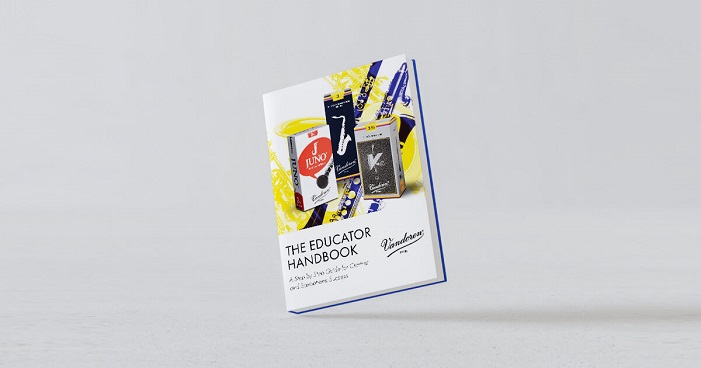Educator’s Handbook: Guide to Effective Teaching 2025

As someone who has spent years navigating the field of education, I’ve come to realize that having the right resources can make all the difference. One resource I’ve found invaluable is what I like to call the “Educator’s Handbook.” This isn’t just a metaphorical phrase—it’s a real tool that helps teachers, administrators, and even policymakers organize their efforts, refine their strategies, and achieve the best outcomes for their students.

In this blog post, I’ll walk you through what the Educator’s Handbook is, why it matters, and how you can use it to enhance your teaching journey.
What is the Educator’s Handbook?
The Educator’s Handbook is a comprehensive guide or resource designed specifically for people in education. It serves as a roadmap for:
- Planning lessons
- Managing classrooms
- Tracking student progress
- Implementing educational policies
While there are many variations out there, the core idea remains the same: It’s a go-to resource that empowers educators to handle the day-to-day challenges of teaching while keeping long-term goals in mind.
Why is the Educator’s Handbook Important?
Teaching is one of the most rewarding professions, but it’s also one of the most demanding. With so many responsibilities—from lesson planning to grading and managing behavioral issues—it can be easy to feel overwhelmed. This is where the Educator’s Handbook shines.
Here are a few reasons why it’s important:
- Organization Made Simple: The handbook helps you keep everything in one place. Whether it’s a checklist for parent-teacher conferences or templates for progress reports, having these resources at your fingertips can save you hours.
- Consistency Across the Board: When schools adopt a standard handbook, it ensures that all teachers follow the same practices. This consistency benefits students and creates a cohesive learning environment.
- Adaptability for Every Situation: The handbook isn’t just for new teachers. Even seasoned educators can use it to adapt to changing curricula, incorporate new technologies, or manage unforeseen challenges.
- Focus on Student Success: By reducing the time spent on administrative tasks, the handbook allows educators to focus more on what really matters: their students.
What Does an Educator’s Handbook Include?
A good handbook is packed with tools, strategies, and information that educators can use every day. Here are some common sections you might find:
1. Classroom Management
- Tips for creating and maintaining a positive classroom environment
- Strategies for dealing with disruptive behavior
- Guidelines for building respectful relationships with students
2. Lesson Planning
- Sample lesson templates
- Best practices for aligning lessons with curriculum standards
- Ideas for engaging students with different learning styles
3. Assessment Tools
- Rubrics for grading assignments
- Strategies for formative and summative assessments
- Tips for giving constructive feedback
4. Parent Communication
- Templates for newsletters, emails, and meeting agendas
- Strategies for involving parents in their child’s education
5. Professional Development
- Resources for staying updated on educational trends
- Tips for setting career goals
- Opportunities for collaboration with colleagues
How to Use the Educator’s Handbook Effectively
Using the Educator’s Handbook isn’t about following it to the letter. Instead, it’s about adapting it to your unique teaching style and needs. Here are a few tips:
1. Start Small
If you’re new to using a handbook, don’t feel pressured to dive into every section at once. Start with one area where you need the most support, such as lesson planning or classroom management.
2. Personalize It
Make the handbook your own by adding notes, highlighting key sections, and even inserting your own templates and resources.
3. Collaborate with Colleagues
Share ideas and strategies with other teachers. They might have creative ways of using the handbook that you hadn’t considered.
4. Update Regularly
Education is always evolving, and your handbook should too. Take time at the end of each semester to review what worked, what didn’t, and make adjustments accordingly.
My Personal Experience with the Educator’s Handbook
When I first started teaching, I struggled to keep up with the demands of the job. My lesson plans were scattered, my classroom management strategies were inconsistent, and I often felt like I was just trying to survive each day.
That’s when a mentor introduced me to the Educator’s Handbook. It wasn’t a magic fix, but it gave me a structure to build on. Over time, I customized it to fit my teaching style and my students’ needs. Today, I can’t imagine teaching without it.
Final Thoughts
Whether you’re a new teacher just starting out or a seasoned educator looking to refine your methods, the Educator’s Handbook is a powerful tool. It’s more than just a guide—it’s a partner in your teaching journey, helping you stay organized, confident, and focused on your ultimate goal: making a difference in the lives of your students.
So, if you haven’t already, I highly recommend exploring or creating your own version of the Educator’s Handbook. Trust me, it’s a game-changer.





